9 Forgotten Arizona Ghost Towns With An Unforgettable, Haunting Beauty

Arizona’s desert landscape holds secrets that time nearly forgot. Scattered across the state are ghost towns that once buzzed with miners, merchants, and dreamers chasing fortunes.
Today, these abandoned settlements stand as haunting reminders of boom-and-bust days, offering visitors a chance to step back into the Wild West and experience history frozen in time.
1. Swansea
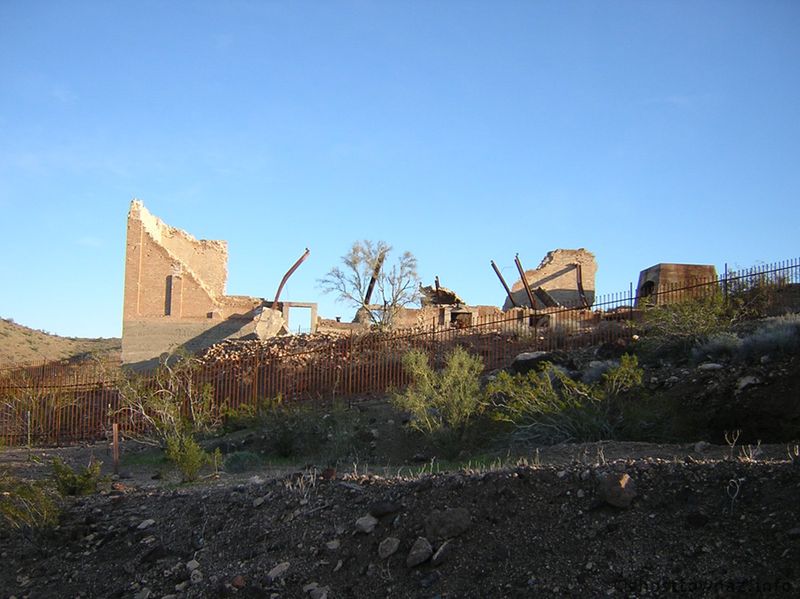
Copper dreams built Swansea in 1909, and copper’s collapse destroyed it just a decade later. Nestled near the Colorado River, this remote town processed ore from nearby mines until the market crashed.
Visitors today find skeletal remains of a massive smelter, crumbling adobe walls, and rusted equipment scattered like forgotten toys. The isolation here is profound, you’ll likely have the entire ghost town to yourself.
Swansea is now managed by the Bureau of Land Management (BLM), and visitors can follow an interpretive loop trail through its ruins. Bring plenty of water and a high-clearance vehicle, because Swansea sits miles from civilization on rough desert roads. The haunting beauty lies in how nature slowly reclaims what humans left behind.
2. Ruby (Santa Cruz County)
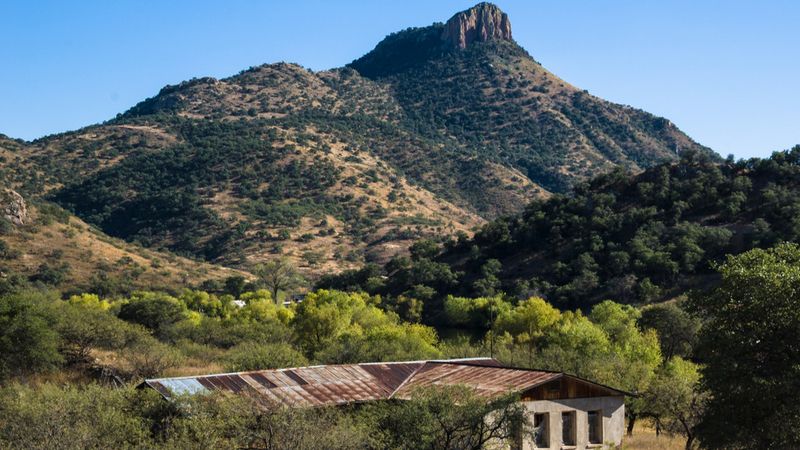
Ruby earned its reputation as one of Arizona’s best-preserved ghost towns, and for good reason. Founded as a mining camp in the 1870s, it boomed during the early 1900s before shutting down in 1941.
Walking through Ruby feels like trespassing on someone’s yesterday. The old schoolhouse, jail, and mine superintendent’s home still stand, remarkably intact. You can peek through dusty windows and imagine children at their desks or prisoners behind bars.
However, as of June 2024, Ruby is closed to the public and no longer offers general admission or tours. It remains privately owned and off-limits without permission. The surrounding mountains create a dramatic backdrop that photographers absolutely adore, especially during golden hour.
3. Vulture City
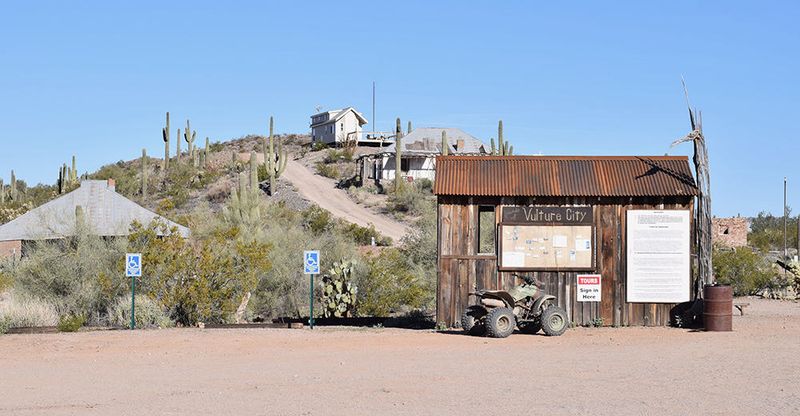
Henry Wickenburg struck gold here in 1863, launching Arizona’s most productive gold mine. Vulture City sprang up practically overnight, housing miners and their families in a dusty desert outpost.
Historic records estimate the Vulture Mine produced over 340,000 ounces of gold and 260,000 ounces of silver, worth more than $200 million in today’s value. Now, the town operates as a fascinating outdoor museum where you can explore the assay office, blacksmith shop, and even the hanging tree where claim-jumpers met their fate.
Guided tours bring the town’s colorful history to life with tales of fortune, tragedy, and Old West justice. Located near Wickenburg, it’s an easy day trip destination.
4. Castle Dome Mine Museum & Ghost Town
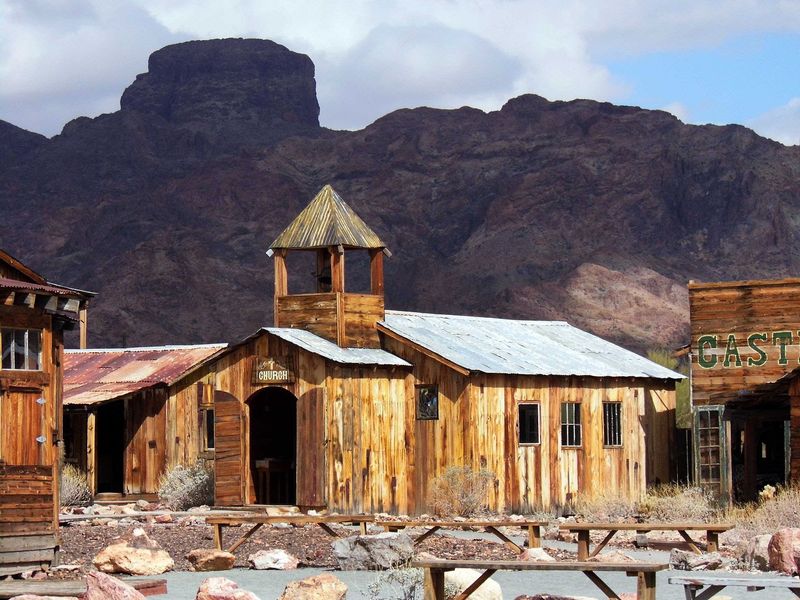
Someone had the brilliant idea to transform this abandoned mining site into a living history museum, and boy, did they succeed! Castle Dome operated from the 1860s through the 1970s, producing large quantities of silver and lead.
Today, over 50 restored and reconstructed buildings overflow with authentic artifacts, antiques, and mining equipment. Each structure tells its own story, from the assay office to the bordello to the general store stocked with vintage goods.
The attention to detail is remarkable, making you feel like miners just stepped out for lunch. Located near Yuma, this ghost town offers a unique museum experience combined with genuine Western atmosphere.
5. Fairbank
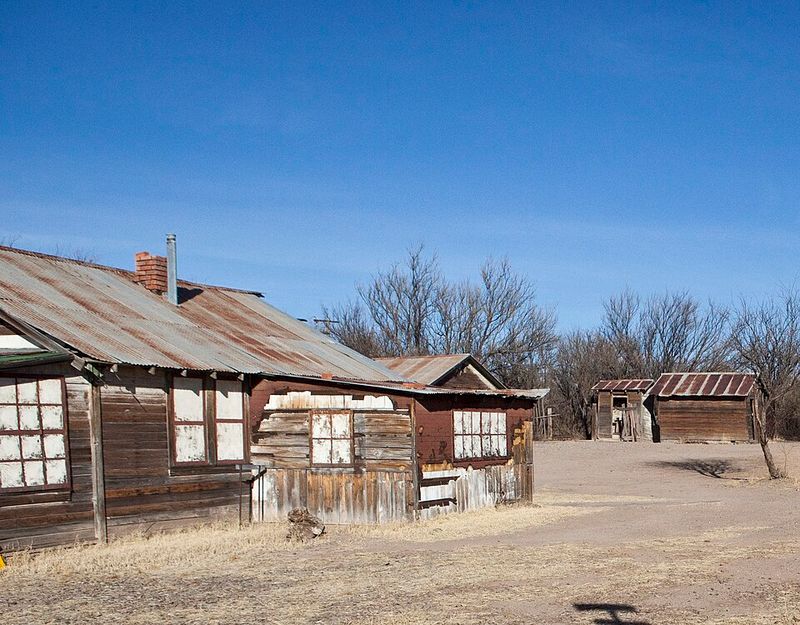
Fairbank served as a railroad stop and commercial hub rather than a mining town, which makes it somewhat unusual. Established in 1881, it supplied nearby mining camps like Tombstone with goods and services.
The town survived longer than most, with its post office remaining active until the mid-20th century (records differ on the exact closure date). Several structures remain standing, including the schoolhouse and the bullet-riddled mercantile building, a souvenir from an attempted robbery in 1900.
Managed by the Bureau of Land Management, Fairbank offers free access and interpretive signs explaining its history. The San Pedro River flows nearby, creating a surprisingly green oasis amid typical desert surroundings that attracts wildlife and birdwatchers alike.
6. Two Guns

Route 66 roadside attraction meets ghost town at Two Guns, where tourist trap dreams died hard. Entrepreneurs tried multiple times to capitalize on travelers passing through, building gas stations, restaurants, and even a small zoo near the so-called “Apache Death Cave,” a site steeped in local legend.
Everything failed spectacularly, leaving behind a creepy collection of graffiti-covered ruins. The crumbling structures and abandoned cages create an eerie atmosphere that urban explorers find irresistible, though visitors should exercise caution around unstable buildings.
Located between Flagstaff and Winslow, Two Guns represents a different kind of ghost town—one built on highway commerce rather than mining. Its bizarre history makes it unforgettable.
7. Harshaw

Silver brought 2,000 people to Harshaw in the 1870s, transforming a remote canyon into a bustling community. At its peak, the town boasted saloons, hotels, stores, and a brewery—an impressive lineup for a frontier settlement.
When silver prices plummeted, so did Harshaw’s population. Today, only stone foundations, scattered debris, and a lonely cemetery remain. Trees grow through former buildings, and wildlife has completely taken over.
Getting there requires navigating rough roads through Coronado National Forest, but the journey rewards adventurers with solitude and spectacular scenery. The cemetery’s weathered headstones tell poignant stories of frontier hardship and loss.
8. Pearce

Gold fever struck Pearce in 1894 when prospector James Pearce discovered the Commonwealth Mine. Within years, hundreds of miners and merchants flocked to this southeastern Arizona boomtown seeking their fortunes.
Unlike many ghost towns, Pearce hasn’t completely died, a handful of residents still call it home. The historic Pearce General Store, listed on the National Register of Historic Places, now serves as a museum preserving the town’s history. Crumbling adobe buildings line the dusty streets alongside a few occupied homes.
This half-ghost, half-living town creates an interesting contrast between past and present. Visitors can explore freely while respecting the privacy of current residents who’ve chosen this quiet, historic community as home.
9. Gleeson
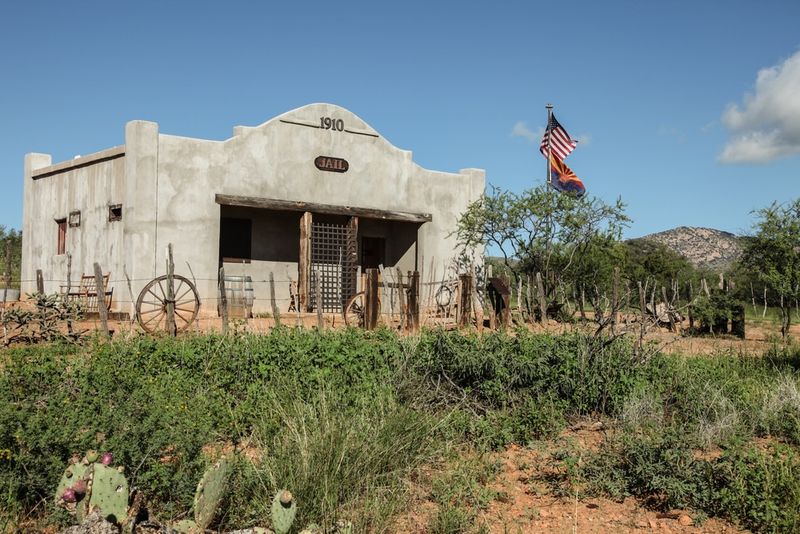
Copper made Gleeson matter in the early 1900s, when the Copper Belle Mine employed hundreds of workers. The town grew quickly, complete with stores, saloons, a hospital, and a notorious jail that still stands today.
That jail, built from sturdy stone blocks, has outlasted nearly everything else. Visitors love photographing its imposing structure and peering through the barred windows. The Gleeson Jail has been restored and now operates as a small museum, typically open the first Saturday of each month or by appointment.
Like Pearce nearby, a few hardy souls still live in Gleeson, maintaining homes among the ruins. The combination of inhabited and abandoned creates a peculiar atmosphere, part ghost town, part living community frozen in time.
